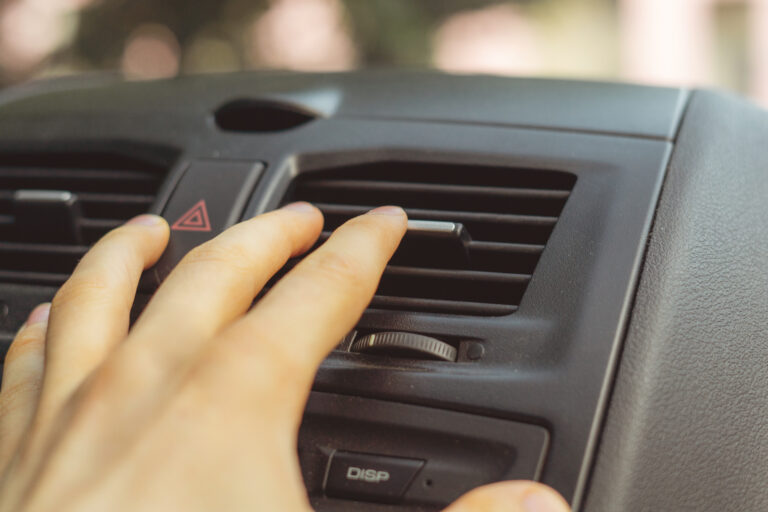The timing belt is an essential part of the automobile engine; it can create severe damage if it breaks. The strap can damage due to some factors, but the most typical is age. Another common problem is the belt tensioner. If the tensioner misbehaves, it can cause the belt to find loosened or cause the sheave to take, making the belt come off. Recognizing some of the signs of a poor belt tensioner can assist you in preventing significant engine damages because of a timing belt failure.
Part 1 of 6: Design of the belt tensioner.
The timing belt tensioner is applied to do just that – maintain tension on the timing belt. Over time, as a result of age as well as warmth, the belt will stretch out. As the belt extends, it can become loosened, so the tensioner needs to change the belt as is necessary to keep it limited. There are two significant sorts of belt tensioners.
Part 2 of 6: Tensioner signs
When a timing belt tensioner stops working, it can cause various signs and symptoms.
Sign 1: Squealing, rattling, or chirping. When the tensioner or tensioner wheel stops working, the loss of stress can cause the belt and sheaves to make shrill rattling or chirping sounds.
If the pulley bearing entirely stops working, it can also cause a squealing or perhaps a grinding sound.
Signs and symptom 2: Knocking or hit. If the tensioner does not care the belt tight, the belt can come loosened and strike numerous parts inside the timing cover, consisting of the surface itself. This can create a slapping or knocking sound.
Symptom 3: Check engine light illuminated. Though the sound is one of the most common signs, a loose timing belt can trigger a check engine light.
The check engine light can begin and also establish a code for a valve timing issue. This is because the shutoff timing can be out of sync due to the belt not being limited.
Part 3 of 6: What you will require to diagnose the trouble.
Having all the needed materials before starting the work will certainly make it go a lot more efficiently. If you are likely to replace the tensioner, it is likewise a great time to change the timing belt and the related parts.
Materials Needed
Flashlight
Ratchet w/metric and typical outlets
Timing belt tensioner (timing kit if doing an entire task).
Torque wrench.
Part 4 of 6: Isolating the sound.
Because many other parts are located at the front of the engine that can make similar noises to a stopping working tensioner, it is necessary to isolate the noise.
You ought to get rid of the serpentine belt, start the vehicle, and see if the sound stays the same. If the sound vanishes after that, the noise comes from among the engine devices.
Action 1: Park your vehicle and also turn off the engine.
Step 2: Open the hood and also find the serpentine belt. The belt inclination is on the front of the engine.
Suggestion: Take an image of the serpentine belt transmitting with your cell phone. This will make it much simple to reinstall the belt if you do not represent its directing.
Step 3: Locate the serpentine belt tensioner. Move it in the instructions needed to loosen up the belt.
Step 4: Pull out the belt. When the belt is loose sufficient, you will be able to pull it out from the pulley blocks.
Step 5: Start the engine as well as listen to see if the noise vanishes. If the sound remains, it might be the timing sash tensioner.
Warning: Running the engine with the belt pullout will undoubtedly keep the battery charging and establish a check engine light. Ensure you maintain this to a minimum and transform the engine off as soon as you confirm whether the sound adjustments.
Suppose you have identified that the noise within the timing belt cover that continues to Part 5. If the sound disappeared, examine all of the engine pulleys to see which one was making the noise. Fix the issue and reinstall the belt if you can, or have a certified technician settle the problem.
Part 5 of 6: Pull outing the timing belt tensioner.
Step 1: Remove any engine devices. The AC compressor or ability steering pump may hinder the timing cover.
Action 2: Remove any engine installs that may conflict. If an engine mount needs to be removed, you need to sustain the machine with suitable equipment.
Step 3: Pull out the harmonic balancer. The harmonic balancer may obstruct the timing cover elimination.
Step 4: Remove the timing belt cover installing bolts. Then get rid of the timing belt cover.
Step 5: Check the stress on the timing belt. Press on the belt in between the pulleys. It needs to stagnate greater than about 1/4 inch.
Idea: If the belt is loose, then the tensioner needs to be changed. This is likewise a great time to examine the timing belt if it reveals wear indicators, consisting of breaking or worn-out teeth. After that, it should be changed.
Step 6: Crank above the engine by hand. Use the ratchet and socket to transform the engine until the timing notes line up according to the manufacturer’s specs.
Suggestion: If your engine calls for camshaft or crankshaft alignment tools, install them currently.
Step 7: Remove the timing belt tensioner. Remove the tensioner according to producer specs.
Step 8: Rotate the timing belt tensioner pulley and all of the other timing sheaves by hand. Pay attention to any sounds and feel for any roughness or binding.
Replace any wheels that make noise or do not rotate efficiently.
Step 9: Install the new tensioner as well as any other wheels. Torque them to requirements.
Pointer: If your brand-new tensioner has a securing pin, you can remove it currently.
Step 10: Turn the engine back right into placement. Using your ratchet and outlet on the crank pulley bolt, crank the engine over several changes by hand and realign the timing marks.
Action 11: Make sure that all of the timing marks are still lined up. Check the timing marks after you turn the engine over.
Step 12: Reinstall the timing cover. Please place it in place as well as mount its installing bolts until they are tight.
Step 13: Reinstall the crank pulley. Then reinstall any other engine devices that were previously removed.
Action 14: Reinstall the serpentine belt. Route it around the suitable pulleys as well as move the tensioner as needed.
Suggestion: Mention your picture or diagram for the correct serpentine belt routing.
Step 15: Begin the engine and see if the sound is gone.
Part 6 of 6: Recommendations and safety measures.
When performing a task similar to this, there are some points to take into consideration.
If you are likely to replace the timing belt tensioner, returning, the whole timing belt package is good. This usually consists of a brand-new timing belt, every one of the idler sheaves, the tensioner, and the water pump.
When changing any part of the timing belt system, it is essential to make sure when relocating the engine. Some engines are intervention engines – meaning that damage can occur due to piston contact with the shutoffs, which needs the machine to be moved out of time.
Replacing the timing belt can be a comprehensive solution and can result in severe engine damage otherwise done correctly. If you are not comfy with this, you must get some help from a qualified mechanic who can examine your timing belt tensioner for you.






